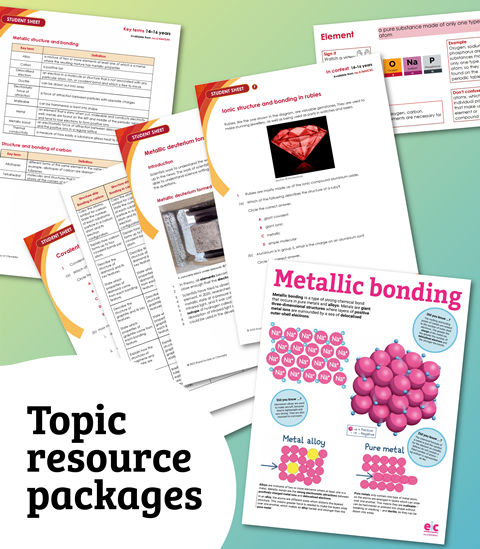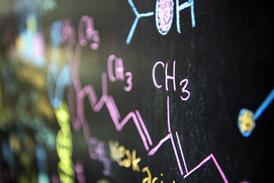All Reactions and synthesis articles – Page 20
-
 Resource
ResourceOn This Day - Apr 05 : Synthesis of morphine
Morphine was first isolated from dried poppy resin in the early 1800s and remains the best drug for relieving severe pain. Morphine is named after Morpheus, the Greek god of dreams.
-

-
 Resource
ResourceSynthesis and Analysis
Synthesis and analysis are two key aspects of chemistry, particularly when exploring the role of chemistry in an industrial context and relating the products formed to applications in everyday life. In order to successfully synthesise any material it is necessary to have an understanding of the starting materials, the ...
-

-
 Resource
ResourceLimestone Chemistry
This activity is most appropriate for students aged 14-16 to illustrate chemical reactions and useful materials made from rocks.
-

-
 Feature
FeatureThe hydrolysis of 2-bromo-2-methylpropane
A one hour experiment to determine the order of the reaction and show that it follows an SN1 mechanism
-
 Resource
Resource45 chemistry puzzles for 16-18 years
Try these chemistry puzzles based on sudoku to help 16–18 year old students consolidate their knowledge about key topics, with printable worksheets and answers.
-

-

-
 The Mole
The MoleBreaking Bad – poisoning gangsters with phosphine gas
On screen chemistry with Jonathan Hare
-
 Feature
FeatureTwo-step bromine attack
An experiment for the classroom to show that bromine adds to an alkene by two-step electrophilic addition
-
 Exhibition chemistry
Exhibition chemistryNitrogen triiodide - a sensitive, contact explosive
Create a beautiful cloud of vapour mixed and gas with this safe contact explosive demonstration
-

-
 Feature
FeatureCatalysts for a green industry
Chemists are working to develop new, longer-lasting catalysts to ensure industrial processes are cleaner, greener and more efficient
-
 Exhibition chemistry
Exhibition chemistryPlatinum-catalysed oxidation of ammonia
Demonstrations designed to capture the student's imagination
-

-
 Lesson plan
Lesson planHow was the first artificial dye made? | 16-18 years
Explore organic synthesis and the making of the first artificial dye, mauve, in a lesson plan and directed activity related to text (DART) for 16–18 year olds.
-
 Lesson plan
Lesson planHow does sodium react with chlorine? | 14-16 years
Investigate the reaction of sodium with chlorine, using students’ understanding of atoms, ions and lattice structure, in this lesson plan for 14–16 year olds.
-
 Lesson plan
Lesson planNucleophilic substitution reaction mechanisms | 16-18 years
Help your students explore the mechanism for an organic nucleophilic substitution reaction using this lesson plan with activities for 16–18 year olds.











